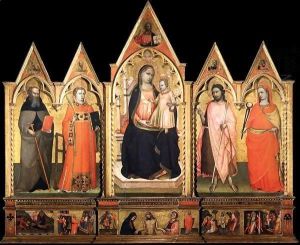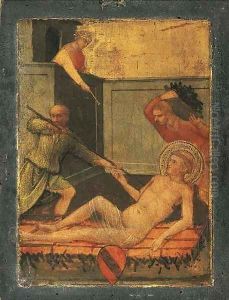Lorenzo di Niccolo Paintings
Lorenzo di Niccolò was an Italian painter active during the transition from the late Gothic to early Renaissance periods. Born around 1370 in Florence, he was a part of the vibrant artistic scene that was developing in Tuscany at the time. Lorenzo's artistic career was influenced by the prevailing Gothic style as well as by the emerging Renaissance principles that were being explored by his contemporaries. He worked within the Florentine school, where he absorbed the ornamental and detailed approaches typical of Gothic art, while also being exposed to the new emphasis on perspective and naturalism.
Lorenzo's work is characterized by its delicate lines, vivid use of color, and adherence to traditional Gothic iconography. He was a follower of Spinello Aretino, a prominent painter of that era, and this influence is visible in Lorenzo's paintings, particularly in his treatment of figures and drapery. Despite the lack of extensive documentation about his life, Lorenzo di Niccolò's contribution to the arts is primarily recognized through his surviving works, which include altarpieces and frescoes.
Notable works by Lorenzo include the 'Madonna and Child Enthroned', which displays his skill in creating tender religious scenes imbued with a sense of grace and piety. His other important works include the 'Coronation of the Virgin' and the 'Stories of St. Nicholas', which demonstrate his narrative ability and attention to detail. Lorenzo's paintings often feature delicate patterns and a richness of decoration that are hallmarks of the International Gothic style.
Lorenzo di Niccolò's career spanned over four decades, and during this time, he contributed to the artistic patrimony of Florence and its surroundings. He passed away in 1412, leaving behind a body of work that reflects the transitional period in which he lived. Although not as widely recognized as some of his contemporaries, Lorenzo's paintings remain valued for their blend of Gothic elegance and a nascent Renaissance sensibility.

